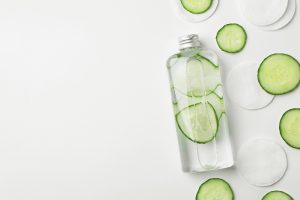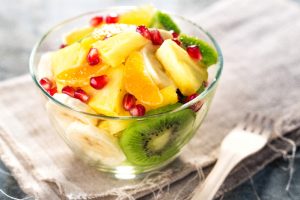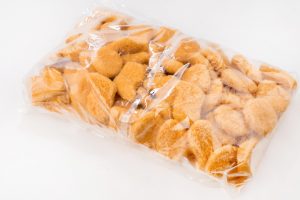Most of us know that salty foods make you thirsty. But did you know that high salt intake can make you more hungry than thirsty?
That's what the researchers of a new study say. (1) The study observed ten cosmonauts involved in flight simulation programs for three years. It took place in a controlled environment for months, as researchers measured nutrition status, water, and salt intake.
 Here are the two most surprising things they found about being on a long-term, high-salt diet:
Here are the two most surprising things they found about being on a long-term, high-salt diet:
- The subjects drank less water — a finding that upends conventional wisdom.
- They reported more hunger, even though they took in the same amount of calories and nutrients.
What causes hunger when you eat more salt?
The study showed that on a high-salt diet, the body goes into water-conservation mode. Your body starts to retain water because your kidneys are working to prevent water loss.
When water levels in the body are optimal, you're less thirsty. As a result, the subjects on a high-salt diet reported less thirst.
But here is the most interesting finding!
High salt intake led to the breakdown of muscle protein. When this happens, the body makes urea as a byproduct.
Urea helps your kidneys reabsorb fluid and prevents water loss from the body. This process involves energy, which triggers hunger and then overeating.
High salt intake has other dangers too!
We all know that high salt intake (or at least highly processed, refined salt) can lead to high blood pressure. But this particular study showed that there are more consequences to high salt intake than just high blood pressure. It's worth mentioning here that not ALL studies agree that salt intake leads to high blood pressure.
The body's process of making urea also increases the levels of glucocorticoids. This, in turn, increases the risk of diabetes, obesity, and heart problems.
Keep in mind, the study results are only about the long-term effects of high salt intake on the body — not the short-term effects.
In a typical American diet, sodium comes from processed food, frozen foods, and restaurant meals. Besides salt, these foods are also high in sugar and saturated fats. Not to mention, this is usually highly processed, refined salt.
If your sodium intake concerns you, there are ways to bring it down.
6 ways to limit your sodium intake
 1. Read food labels. Look for low sodium products that contain less than 140 mg.
1. Read food labels. Look for low sodium products that contain less than 140 mg.
2. Check for hidden sodium in foods like baking powder, baking soda, and MSG.
3. Beware of sodium from canned foods. Choose fresh fruits and veggies instead of canned.
4. Seasonings, soups, and sauces are high in sodium, so watch your intake from these sources.
5. Specific products like cottage cheese may not taste salty but have high sodium levels.
 6. If you buy packaged meat, always choose fresh cut meats. Avoid pre-seasoned and processed meats.
6. If you buy packaged meat, always choose fresh cut meats. Avoid pre-seasoned and processed meats.
I should say that I have no plans to eliminate salt from my own diet. I use high quality, real sea salt. I take this study with a grain of salt (pun intended) but I like to provide the info so you can be informed to make the decisions that are best for your own health. Everyone's body is different and responds differently to different things.
Remember, you can spruce up your meal without salt with the help of spices and herbs. So go for it!
You might also like:
Drink This to KILL Hunger Pangs
Salt and Sodium (what's the difference?)
Yours in health and happiness,
Danette
P.S. Please share this with your friends and family! Are you interested in cutting back on your own salt intake? Comment below!






